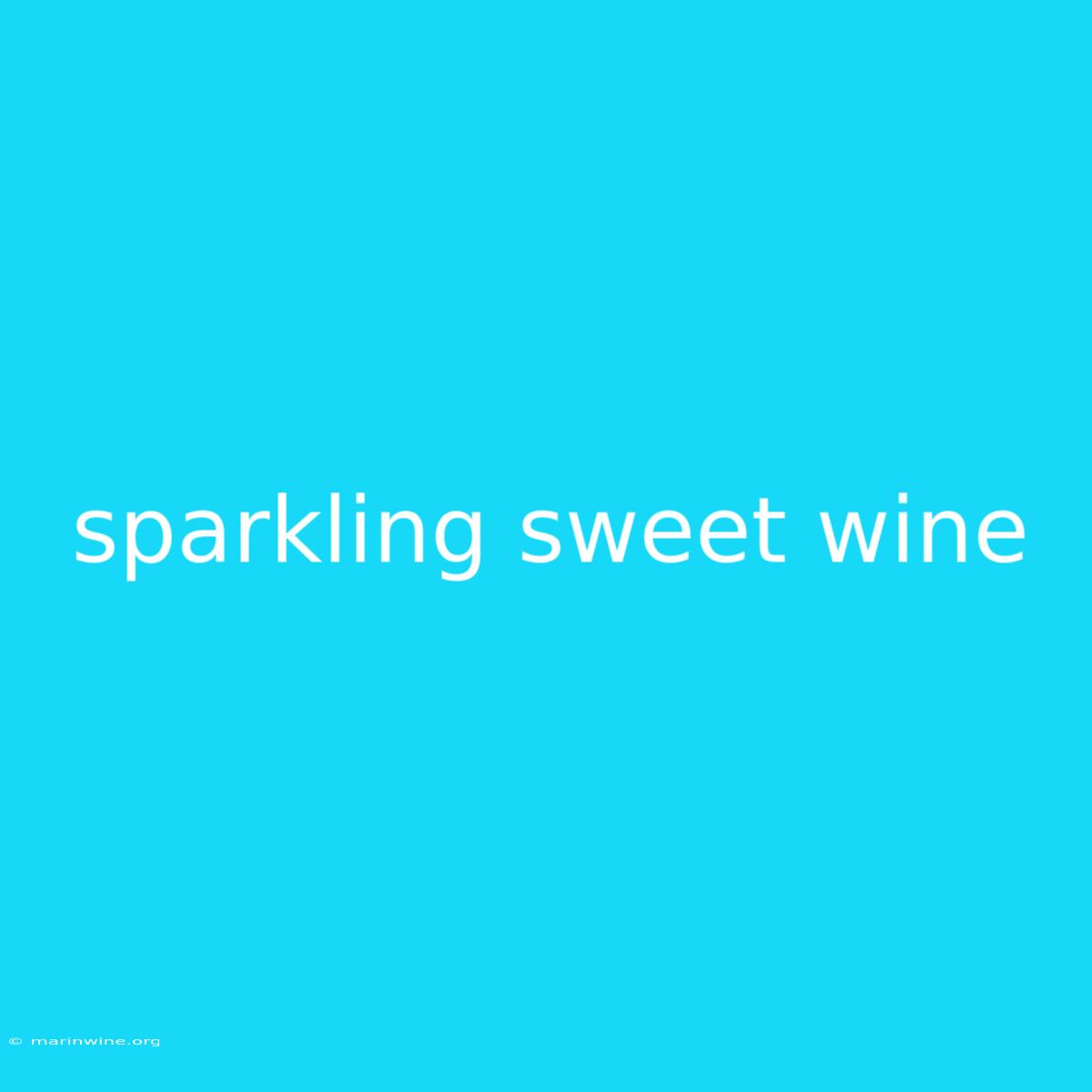Sparkling Sweet Wine: A Celebration in Every Sip
Have you ever wondered what makes sparkling sweet wine so captivating? It's the delightful combination of bubbles and sweetness that makes it the perfect choice for any celebration. This article will explore the world of sparkling sweet wine, revealing its unique characteristics, varieties, and why it's a must-try for any wine enthusiast.
Why Sparkling Sweet Wine Matters
This delectable beverage transcends mere enjoyment. It offers a unique sensory experience that blends delicate bubbles with a touch of sweetness. This combination creates a refreshing and palate-pleasing experience, making it ideal for various occasions. Beyond its versatility, sparkling sweet wine presents a gateway into the world of dessert wines, opening up possibilities for new flavor explorations.
Key Takeaways of Sparkling Sweet Wine
| Key Takeaways | Description |
|---|---|
| Diverse Styles | From Moscato d'Asti's delicate sweetness to Asti Spumante's vibrant fruitiness, sparkling sweet wines offer a wide range of styles. |
| Sweetness Levels | Sparkling sweet wines range from slightly off-dry to intensely sweet, allowing you to find the perfect balance for your taste. |
| Food Pairings | They complement a wide range of dishes, from desserts and cheeses to spicy Asian cuisine. |
| Production Methods | The "Charmat" method, a faster and more affordable way to produce sparkling wine, is commonly used for sparkling sweet wines. |
Exploring Sparkling Sweet Wine
The Allure of Bubbles
The effervescence of sparkling sweet wine is a key element of its charm. The tiny bubbles, released from the dissolved carbon dioxide, tickle the palate and create a sensation of lightness and freshness. These bubbles are a result of the second fermentation process, where yeast converts sugars into alcohol and carbon dioxide, trapping the bubbles within the wine.
Sweetness Spectrum
Sparkling sweet wines offer a diverse spectrum of sweetness, catering to various palates. This range is often categorized based on residual sugar levels, with terms like "sec" (dry), "demi-sec" (semi-dry), "doux" (sweet), and "moelleux" (honeyed) being used to describe sweetness intensity.
Varietal Diversity
From Italy's Moscato and Brachetto to France's Vouvray and Germany's Riesling, many grape varieties contribute to the production of sparkling sweet wines. Each grape brings unique characteristics to the table, influencing the wine's aroma, flavor, and sweetness level.
Sparkling Sweet Wine: A Culinary Journey
This type of wine is a versatile companion for a range of culinary experiences. Its sweetness complements desserts like fruit tarts, chocolate mousse, and crème brûlée. The delicate bubbles cut through the richness of these dishes, creating a balanced and delightful experience. However, sparkling sweet wine extends beyond desserts, pairing wonderfully with spicy Asian cuisine, salty cheeses, and even fruity salads.
FAQ for Sparkling Sweet Wine
Q: What is the difference between sparkling sweet wine and Prosecco?
A: While both are sparkling wines, Prosecco typically has a drier profile than sparkling sweet wines. Prosecco is primarily made from the Glera grape and often falls into the "extra dry" or "dry" categories on the sweetness scale.
Q: How do I store sparkling sweet wine?
A: Store sparkling sweet wine in a cool, dark place, away from direct sunlight and heat. The bottle should be kept upright to minimize contact between the wine and the cork.
Q: What are some popular examples of sparkling sweet wine?
A: Moscato d'Asti (Italy), Asti Spumante (Italy), Vouvray (France), and Riesling Sekt (Germany) are all popular examples of sparkling sweet wines.
Q: How long can I keep a bottle of sparkling sweet wine?
A: Sparkling sweet wines are typically best enjoyed within 2-3 years of production. However, some premium sparkling sweet wines can age well for up to 5-10 years.
Tips for Enjoying Sparkling Sweet Wine
- Chill the wine: Serve sparkling sweet wine chilled, ideally between 40°F and 45°F.
- Use the right glass: A flute or coupe glass is ideal for showcasing the bubbles and aromas of sparkling wine.
- Pair it with the right food: Explore different food pairings to discover new flavors and enhance your experience.
- Try a variety of styles: Explore different grape varieties and sweetness levels to find your preferred taste.
Summary of Sparkling Sweet Wine
Sparkling sweet wines offer a unique and enjoyable experience that blends bubbles, sweetness, and versatility. From its diverse production methods to its wide range of styles and flavors, this beverage provides endless opportunities for exploration and enjoyment.
Conclusión
Sparkling sweet wine is more than just a drink; it is a gateway to a world of flavor and celebration. With its delicate bubbles, tempting sweetness, and adaptability to various culinary experiences, it offers a delightful escape from the ordinary. So, raise a glass, savor the experience, and discover the magic of sparkling sweet wine.

